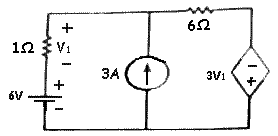Introduction
Very rarely are we lucky enough to run across straight forward series or parallel circuits. In general, all electronic equipment is eomposed of many components that are interconnected to form a combination of series and parallel circuits. In this lesson, we will be combining our knowledge of the series and parallel.
The Christie Bridge Circuit
Who invented the Wheatstone bridge circuit? It was obviousiy Sir Charles Wheatstone. Or was it?
The Wheatstone bridge was actuaily invented by S.H. Christie of the Royal
Military Academy at Woolwich, England. He described the circuit in detail in the Philosophical Transactions paper dated February 28,1833. Christie’s name, however, was unknown and his invention was ignored.
Ten years later, Sir Charles Wheatstone called attention to Christie’s circuit. Sir Charles was very well known, and from that point on, and even to this day, the circuit is known as a Wheatstone bridge. Later, Werner Siemens would modify Christie’s circuit and invent the variable-résistance arm bridge circuit, which would also be called a Wheatstone bridge.
No one has given full credit to the real inventors of these bridge circuits, until now!
Series Parallel circuits Solved problems
Figure 5-1 (a) through (0 shows six examples of series-parallel resistive circuits. The most important point to learn is how to distinguish between the resistors that are connected in series and the resistors that are connected in parallel, which will take a little practice.
One thing that you may not have noticed when examining Figure 5-1 is that:
Circuit 5-1(a) is equivalent to 5-1 (b)
Circuit 5-1 (c) is equivalent to 5-1 (d)
Circuit 5-1(e) is equivalent to 5-1 (f)
When analyzing these series-parallel circuits, always remember that current flow de-termines whether the resistor is connected in series or parallel. Begin at the negative side of the battery and apply these two rules:
- If the total current has only one path to follow through a component, that component is connected in series.
- If the total current has two or more paths to follow through two or more components, those components are connected in parallel.
Referring again to Figure 5-1, you can see that series or parallel resistor networks are easier to identify in parts (a), (c), and (e) than in parts (b), (d), and (f). Redrawing the circuit so that the components are arranged from left to right or from top to bottom is your first line of attack in your quest to identify series- and parallel-connected components..
Problem 1:
Refer to Figure 5-2 and identify which resistors are connected in series and which are in parallel.
 |
| 5-2 Series-parallel circuit exemple |
Answers of Problem 1:
First, let’s redraw the circuit so that the components are aligned either from left to right as shown in Figure 5-3(a), or from top to bottom as shown in Figure 5-3(b). Placing your pencil at the negative terminal of the battery on whichever figure you prefer, either Figure 5-3(a) or (b), trace the current paths through the circuit toward the positive side of the battery, as illustrated in Figure 5-4.
The total current arrives first at R1. There is only one path for current to flow, which is through Rh and therefore is connected in series. The total current proceeds on past R\ and arrives at a junction where current divides and travels through two branches, R2 and R3. Since
 |
| 5-3 serie-parallel circuit problrm 1 |
Current had to split into two paths, R2 and R3 are therefore connected in parallel. After the paral-lel connection of R2 and R3, total current combines and travels to the positive side of the battery. In this example, therefore, R1 is in series with the parallel combination of R2 and R3.
Problem 2
Refer to Figure 5-5 and identify which resistors are connected in series and which are connected in parallel.
 |
| 5-4 Tracing current through a serie-parallel circuit |
Solution Problem 2:
Figure 5-6 illustrates the simplified, redrawn schematic of Figure 5-5. Total current leaves the negative terminal of the battery, and all of this current has to travel through Rh which is therefore a series-connected resistor. Total current will split at junction A, and consequently, R3 and R4 with R2 make up a parallel combination. The current that flows through R3 (I2) will also flow through R4 and therefore R3 is in series with R4. I1 and I2 branch currents combine at junction B to produce total current, which has only one path to follow through the series resistor R5, and finally, to the positive side of the battery.
In this example, therefore, R3 and R4 are in series with one another and both are in parallel with R2, and this combination is in series with R1 and R5.
















































